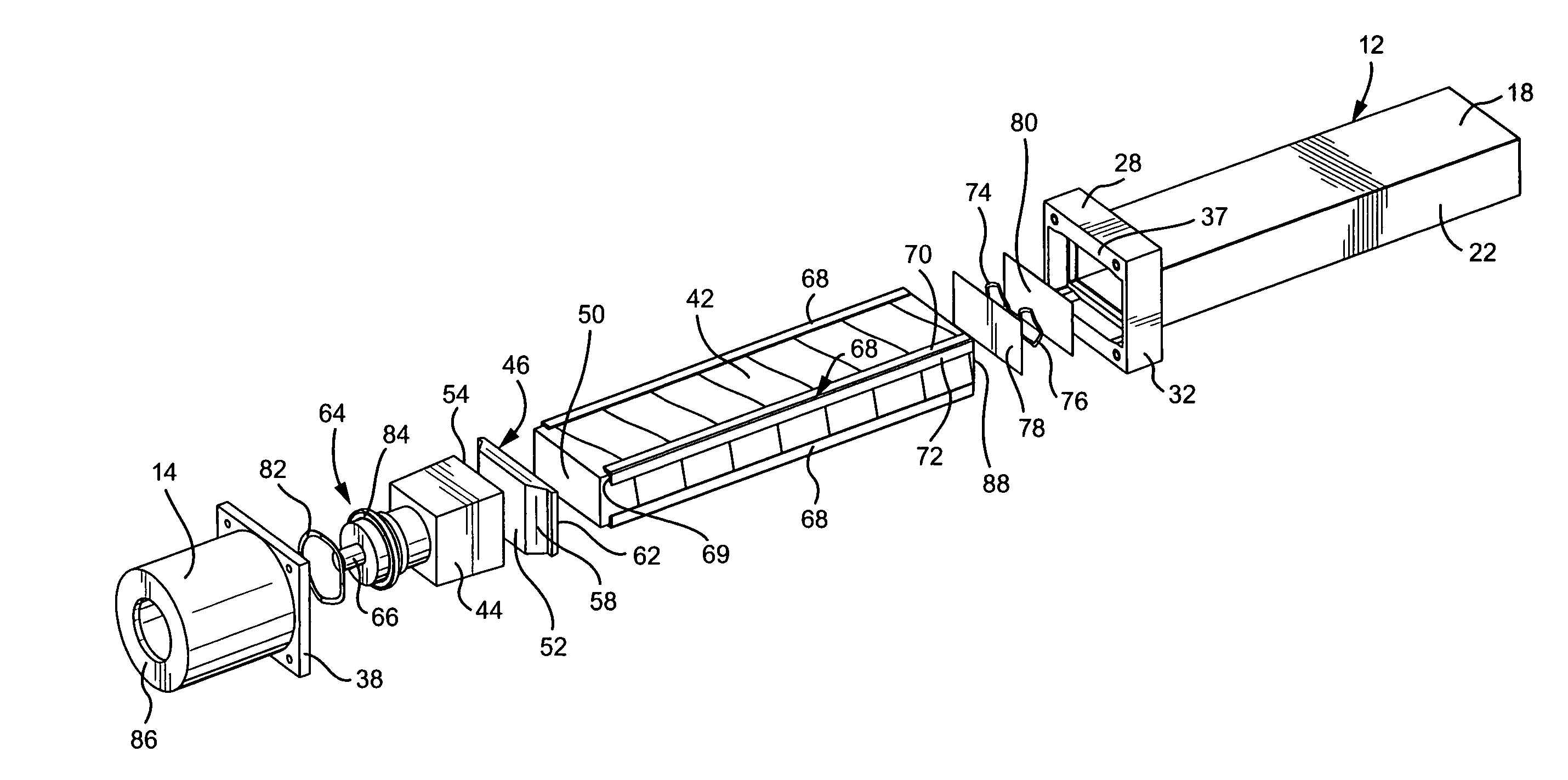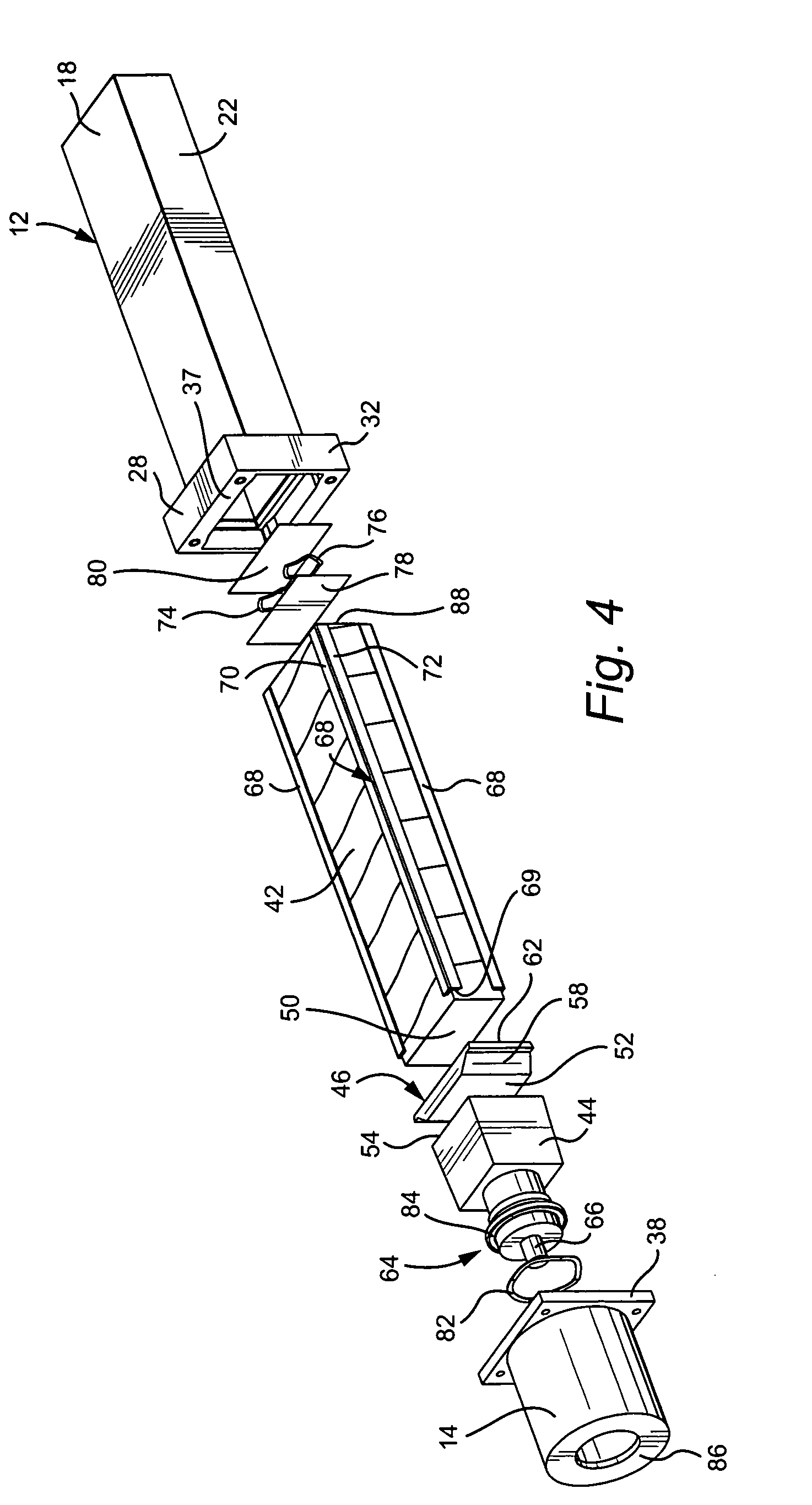Ruggedized scintillation detector for portal monitors and light pipe incorporated therein
a scintillation detector and portal monitor technology, applied in radiation measurement, instruments, measurement devices, etc., can solve the problems of high background counts, high degree of shock or vibration exposure, and often subjected to varying degrees of radiation detectors of portal monitoring during normal use, so as to reduce the attenuation of low-energy gamma rays and reduce the attenuation
- Summary
- Abstract
- Description
- Claims
- Application Information
AI Technical Summary
Benefits of technology
Problems solved by technology
Method used
Image
Examples
Embodiment Construction
[0023]With initial reference to FIGS. 1–3, a portal monitoring radiation detector 10 includes a housing including a main or crystal housing 12 and a PMT cover 14 joined together at a housing interface 16. The main housing portion 12 is of generally elongated rectangular shape, having top and bottom walls 18, 20, side walls 22, 24 and an end wall 26. The opposite end of the crystal housing is enlarged, particularly in terms of the height dimension of the housing, and includes top and bottom walls 28, 30, side walls 32, 34 and an apertured end wall 36 joined to the remainder of the main housing 12. The opposite end wall 37 (also apertured) is sized to mate with a similarly shaped flange 38 on one end of the otherwise cylindrical PMT cover 14, facilitating the joining of the crystal housing 12 and PMT cover 14 by means of screw fasteners 40 or other suitable means. The crystal housing 12 may be constructed of thin-walled aluminum that will reduce the degree of gamma radiation detection...
PUM
 Login to View More
Login to View More Abstract
Description
Claims
Application Information
 Login to View More
Login to View More - R&D
- Intellectual Property
- Life Sciences
- Materials
- Tech Scout
- Unparalleled Data Quality
- Higher Quality Content
- 60% Fewer Hallucinations
Browse by: Latest US Patents, China's latest patents, Technical Efficacy Thesaurus, Application Domain, Technology Topic, Popular Technical Reports.
© 2025 PatSnap. All rights reserved.Legal|Privacy policy|Modern Slavery Act Transparency Statement|Sitemap|About US| Contact US: help@patsnap.com



